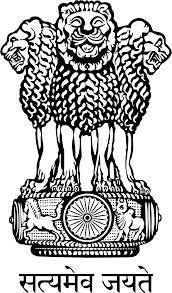INVESTIGATION OF OUTBREAK OF CHIKUNGUNYA IN DISTRICT ALAPPUZHA, KERALA, OCT'2006
BackInvestigation of outbreak of Chikungunya in district Alappuzha, Kerala, Oct 2006
- A central team constituted by the Dte.GHS visited district Alappuzha in Kerala from 4 to 8 Oct 2006 to investigate the outbreak of acute febrile illness, identify the causes of deaths suspected to be due to Chikungunya and to suggest measures for containment of outbreak. Team was composed of experts from World Health Organization, National Institute of Virology (ICMR), Epidemiologists and Entomologist from National Institute of Communicable Diseases, Entomologist from National Vector Borne Disease Control Programme and senior physician from Safdarjung Hospital , Delhi .
- Since May-June 2006, Kerala has reported outbreaks of Chikungunya in some localities of Kozhikode, Trivandrum , Ernakulam and Alappuzha districts. The disease in Alappuzha district is occurring since July 2006 and continues to show the rising trend. A total of 39316 suspected cases of Chikungunya have been reported in the district from 25 Aug to 6 Oct 2006. Cherthala is the worst affected Taluk. Community surveys undertaken during 5-7 October 2006 revealed the attack rate of fever with joint pain (suspect chikungunya) in the last month ranging from 0.7% in Alappuzha Municipal area to 60.2% in Vayalar. There were multiple cases in a large number of families. Most of the cases of suspected chikungunya occurred in adults. Although both sexes were affected, cases were more in females than in males.
- A large number of cases have been admitted to hospitals. Most of them could have been easily discharged. Most of cases presented with high grade fever with or without chills, headache and joint pains, especially in knee, ankle, elbow, wrist and small joints of hands and feet. Many of them had vomiting, bodyache, swelling/oedema of joints, mild rash and photophobia. Fever usually subsided in 2-4 days. Some cases had debilitating joint pain even after 1-2 months. Diagnosis was confirmed in 9 of 25 cases by isolation of CHIK virus and 8 of 20 cases by serology. Most of the cases were treated with paracetamol, brufen, and vitamins.
- Local authorities have reported 74 deaths in Alappuzha districts due to suspected Chikungunya. Analysis of case records of 56 fatal cases made available to the team and other observations indicated that deaths were most likely due to ailments other than Chikungunya.
- Community surveys revealed very high indices of aedes breeding (House Index ranging from 21.7% to 57.8%) including in areas where the attack rate of illness (fever with joint pain) is not high presently. The disease may spread to these areas soon.
- The epidemiological, clinical, entomological and laboratory investigations confirmed that Alappuzha district is in the grip of Chikungunya outbreak. There is an urgent need to undertake intensive vector control measures to contain the transmission. It may not be possible unless vector control measures are coupled with massive awareness campaign to ensure community participation. The local health authorities should prepare and implement a micro plan having six major components – disease management, integrated vector management, behaviour change communication, intersectoral convergence, supervision and monitoring, and an effective media strategy.

























